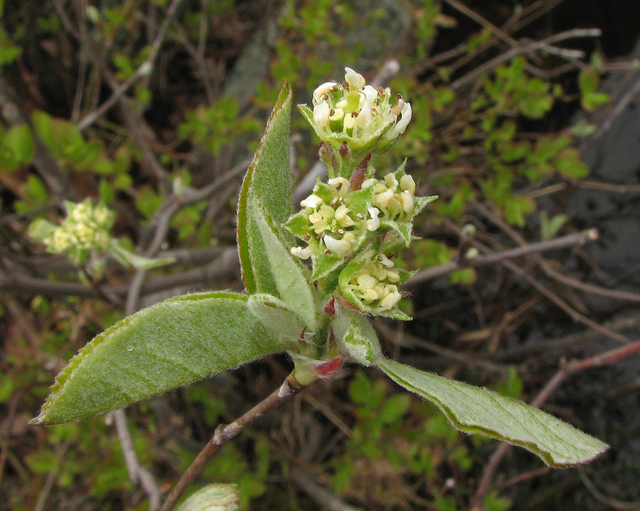Map Snapshot


6 Records
Status
Nantucket Serviceberry is rare in our region, occurring in the Potomac River Gorge as a disjunct population at the southern edge of its range, which is mostly in the Northeast (J. Hill/MNPS).
Description
Note the small, inconspicuous flowers, very different from those of our more typical Amelanchier species, which are conspicuous in early spring because of their long, narrow petals (J. Hill/MNPS).
Where To Find
Potomac River Gorge
Seasonality Snapshot
Source: Wikipedia
| Amelanchier nantucketensis | |
|---|---|

| |
| Scientific classification | |
| Kingdom: | Plantae |
| Clade: | Tracheophytes |
| Clade: | Angiosperms |
| Clade: | Eudicots |
| Clade: | Rosids |
| Order: | Rosales |
| Family: | Rosaceae |
| Genus: | Amelanchier |
| Species: | A. nantucketensis
|
| Binomial name | |
| Amelanchier nantucketensis | |
Amelanchier nantucketensis, also known as the Nantucket serviceberry or the Nantucket shadbush, produces edible fruit called pomes. Nantucket serviceberry is of conservation concern in the wild. Its distribution extends from Nantucket and Martha's Vineyard to Long Island and Staten Island.[2] There are scattered occurrences in Maryland, Virginia, Maine, and Nova Scotia.[1]
This shrub grows 2 to 5 feet tall.[1] It forms colonies by extending stolons. It produces cream-colored flowers and blue fruits. The plant grows in dry, sandy, sunny habitat, including pine barrens and grasslands.[2]
The plant is common on Nantucket.[1]
References
[edit]- ^ a b c d NatureServe (1 September 2023). "Amelanchier nantucketensis". NatureServe Network Biodiversity Location Data accessed through NatureServe Explorer. Arlington, Virginia: NatureServe. Retrieved 8 September 2023.
- ^ a b Amelanchier nantucketensis. Archived 2011-10-26 at the Wayback Machine Center for Plant Conservation.

